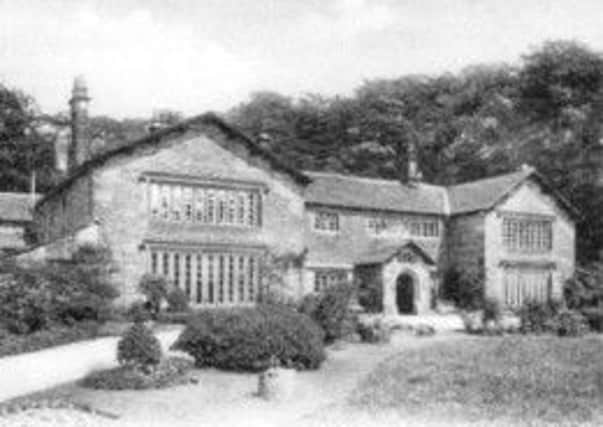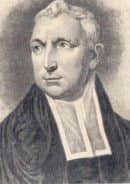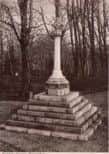Cliviger humanitarian who changed face of local history


Women were not mentioned as candidates for this honour in Victorian times but, as a consequence of a recent article in this series about “Women in Lancashire”, of whom a few were from Burnley, a number of people have contacted me suggesting the names of ladies which might be added to my list.
I will look into this and let you have my conclusions in due course.
Advertisement
Hide AdAdvertisement
Hide AdToday, I want to introduce you to a man who will, forever, be associated with the Burnley area, particularly Cliviger, but who was born at Raynham, Norfolk, in 1759. The gentleman in question is Thomas Dunham Whitaker who moved, aged only one, to Cliviger, when his father, who had previously been curate of Raynham, took up residence at The Holme.


Mr Whitaker had unexpectedly succeeded to the family estates which had been in his family from at least the 15th century.
Later in life, Thomas wrote that his family had originated at High Whitaker, a property near Higham. His family had produced a number of eminent men, including a notable Divine and the clergyman who had married Pocahontas, the famous American Indian princess, to the English tobacco planter, John Rolfe.
The Whitakers were also related to the Nowells of Read, the most well-known of whom was Alexander, who was Dean of St Paul’s at the time of Elizabeth I. Another famous Nowell was Roger, who, in 1612, prosecuted the Lancashire witches at their famous trial in Lancaster.
Advertisement
Hide AdAdvertisement
Hide AdThomas Whitaker, though he was younger, was not only related to but also a friend of Charles Towneley of Towneley. They had adjoining estates though Towneley was much the bigger and Whitaker sold part of his small estate to Charles’ successor.


Thomas Whitaker was sent, as a boy, for schooling at Rochdale but, because of illness, was removed and, three years later, was sent to Threshfield Grammar School, near Grassington. It was here he came to love the countryside and, even as a young man, came to love trees equally well. It was on visits to nearby Bolton Abbey that he learned just how much a landscape could be improved by planting trees and was aware that other landowners in the North of England were investing in large tree planting schemes.
In 1775 Whitaker was admitted to St John’s College, Cambridge. He took an LLB in 1781 and it appears he may have been considered for the chair in Law. However, his father died the following year and the young man was thrust into the role of a country gentleman.
The estate he inherited was not very productive. It was of only six tenanted farms and of about 400 acres with grazing on the surrounding hills and, in the fashion of the time, Thomas set about improving the land. He did this by planting almost half a million trees which was achieved over the years 1784 to 1799. In the year 1790-1 he planted 64,000 larches and for this was awarded the Gold Medal of what was then the Society of Arts, now the Royal Society of Arts.
Advertisement
Hide AdAdvertisement
Hide AdThe larches were not merely planted to beautify the Cliviger area, which, in time, they did indeed achieve, but, to Thomas, they were a long-term cash crop and it has been speculated he intended, upon their maturity, to sell the trees to the Royal Navy, which, at the time of planting, and for some years to come, was still building its ships of timber.
Other landowners were planting trees on their estates at the same time. For some of them, their intention had been to transform their estates. This had been the motive of Thomas Lister, the First Lord Ribblesdale, at Gisburn. Charles Towneley had planted many trees at his Burnley estate, the splendid avenue in front of Towneley Hall, which has been restored recently, being his work. Thomas Whitaker did not go to the extent of constructing statues and temple in the style that can be found near Fountains in North Yorkshire, but he did built paths through his plantings so they could be enjoyed on family walks.
It was Thomas who was responsible for planning the fascinating fishponds on his estate. Today, only one of the ponds, beautifully restored by Todmorden Anglers with a grant from Burnley Council, has survived but it constitutes one of the most attractive sights in the borough.
Not long after succeeding to the estate, Thomas married Lucy Thoresby, a member of the Leeds family, which had produced the historian Ralph Thoresby. This possibly spurred Thomas in two directions at the same time – one was into the Church and the other towards the study of history.
Advertisement
Hide AdAdvertisement
Hide AdThomas possibly thought his income, as a small landowner, was not large enough for him to sustain the family he now anticipated. If he could secure a decent living in the Church it would supplement his income. In 1785 he became a Deacon and, in the following year, was made a priest.
At the time he embarked on another project, one which we can witness today. Close to The Holme there was a chapel which dated from 1533. By the time Thomas knew it, the building was in a poor state of repair and there were only infrequent services held in the building which was served from St Peter’s, Burnley.
The Queen Anne’s Bounty was enlisted for the complete rebuilding of the chapel. The project took five years to complete but in 1794 the church we now know as St John’s Cliviger was finished, not in the Gothic style of most Anglican churches but the Classical style more associated with Nonconformity.
In fact, St John’s was built at a time when the architectural style of places of worship was much debated. It was not until a generation later it was resolved that Anglican churches should be Gothic (tower and spire) and Non-conformist chapels should be built in the style of Greek and Roman temples. This latter is known as the Classical style which is the style of St John’s Church, only one of two of that design to be built in North-East Lancashire.
Advertisement
Hide AdAdvertisement
Hide AdThe other direction Thomas Whitaker followed was that of history and it was the area in which he made most impact. In many ways Whitaker was a man typical of his time. This can be seen in the work he carried out on his estate, in building St John’s Church, in his ecclesiastical appointments and, as we shall see, his activities as a magistrate.
At first Thomas, now a clergyman, (he later became Vicar of Whalley, Blackburn and Heysham) installed in his own church at Cliviger, worked on a book which he hoped would challenge the great work published by Edward Gibbon. This was, of course, the latter’s “Decline and Fall of the Roman Empire” but Thomas was advised such was the fame of this book (though it had its faults) the thoughts of a country parson might not be well received.
He turned, instead, to his first love, so far as history is concerned, that of local history. In 1801 he published his great book on our part of the world. It is generally known as Whitaker’s “History of Whalley” though it covers the whole of the immense Parish of Whalley of which the Burnley and Cliviger areas were merely a part.
The book was followed by a number of others but what makes Thomas Whitaker, now a Doctor of Law, important is that, though he aimed at a small market of like-minded gentlemen, his books were intended to be read and enjoyed. Most historians before Dr Whitaker had based their works on turgid family trees but he had access to huge amounts of information in local family libraries, like that of Charles Towneley, and also visited the sites he wrote about, taking notes and making observations about the things he had seen.
Advertisement
Hide AdAdvertisement
Hide AdThis was a step in the right direction and the “Whalley” book was a great success. It not only became the starting point for the historians, like myself, who have followed him but the book had a great impact on how local history is written and presented generally.
Dr Whitaker wanted his book to look attractive and, to achieve this, engaged the help of his friend Charles Towneley who asked the great artist Turner, then a young man, to illustrate the book. We know Dr Whitaker and Charles Towneley did not always see eye to eye about the role of Turner.
A letter survives in which Dr Whitaker writes: “I have just now a ludicrous Dispute to settle between Mr Townley (sic), myself and Turner, the Draftsman. Mr T (Towneley) it seems has found out an old and very bad Painting of Gawthorpe at Mr Shuttleworth’s House in London – as it stood in the last Century….. . This he insisted would be more characteristic than Turner’s own Sketch, which he desired him to lay (down) and copy the other. Turner ….. refused to comply and wrote to me tragically upon the Subject”.
Turner, as a new film will doubtless show, had something of an artistic temperament, but he did visit our part of the world and we have Dr Whitaker to thank for it. However, in some respects it might be said Dr Whitaker was not only a man of his times in some of the things that he achieved, he was also a man of his times in terms of many of the opinions he had.
Advertisement
Hide AdAdvertisement
Hide AdHis books are full of comments about how the industrial changes of his time were undermining the past, how the landscape of the newly industrialised areas was being degraded by the very thing that was giving them some measure of prosperity.
Dr Whitaker was also concerned by the effect of industrialisation of the lives of ordinary people, something of which he was aware in his role as a magistrate.
He was also very much against the increasing availability of strong drink and, when it was abused, its effects on families.
To me these concerns show Dr Whitaker was essentially a compassionate man. I suspect that, had any of us been around when Dr Whitaker was alive, and in his social position, we might have hoped to share his views. Many, of course, did not and we all know the consequences.
Advertisement
Hide AdAdvertisement
Hide AdIn his lifetime, Thomas Dunham Whitaker was quite well known and he often used his fame, such as it was, to help others.
He was a very well-known preacher, hundreds turning up to hear him speak. It is clear he had a sense of humour – it can be detected in his books and sermons – and he accepted fund-raising appointments throughout the neighbouring industrial areas. He supported the building of hospitals, schools and other social causes.
That is not to say he was soft as a justice of the peace. The opposite was the case. He appears to have little sympathy for law breakers, almost whatever they did.
Towards the end of his life, knowing the end was near, Thomas, now in retirement but still active as a magistrate, called for his woodman, at Cliviger, to arrange for him to be taken out, on a kind of stretcher, to the plantings he had organised over 30 years before. When there, he chose a larch and ordered that it be cut down and a coffin be made out of this tree of his own planting. It was in this coffin he was buried.
Advertisement
Hide AdAdvertisement
Hide AdThomas Dunham Whitaker is one of those historians who can be counted among the founders of “Local History” as a discipline for everyone. That is achievement enough, but he was also one of the founders of the modern “green movement” and a humanitarian. Surely, he deserves a place in what he might have regarded as the pantheon on Burnley Worthies?